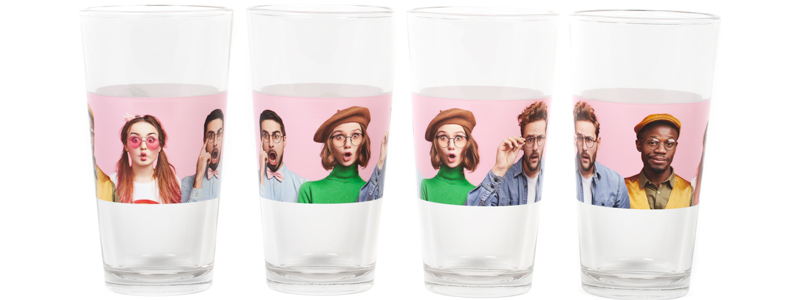- Equipment
- Inks & Supplies
- Services
- Applications
- Tagless
- Resources
- About Us
- Contact Us

Four-color process digital printing utilizes traditional CMYK inks to produce most full-color print jobs. The four colors – cyan, magenta, yellow and key (black) – are known as the subtractive primaries. The combination of cyan, magenta, and yellow (CMY) is capable of creating a form of black-colored ink, but the added fourth color (K) enables reproduction of a “true” black. The integration of a “true,” often darker black to traditional CMY, results in a more accurate representation of black prints. Doing so is also is cost-effective since three inks do not have to combine to create one color. For this reason, the advancement to four-color process printing has become widely popular.
As we recall from grade school, the primary colors are red, green, and blue (RGB). A subtractive primary color is the combination of all primary colors, minus one color. Cyan, magenta and yellow are subtractive primary colors. The name is derived from the idea of “subtracting” light from an image. For example, cyan is achieved by subtracting (or absorbing) red light. Subtractive primaries are primarily used for print, whereas primary (RGB) is used for displays.
Four-color process presents a greater challenge in pad printing than it does in digital printing. While this color reproduction method is achievable, adding more colors to pad printing machines requires creating an etched plate for each color. This then necessitates the further step of aligning each color and accurately printing them in unison on the part.
Similar to pad printing, the same can be said for screen printing. A screen must be made for each color. Each color needs to be aligned. The screen making and printing process can prove to be quite a time consuming and costly.
For this reason, digital printing is the preferred method of utilizing CMYK process colors. Thanks to the integration of computer software programs with digital printers, set-up time and color alignment are drastically reduced.
The addition of colors beyond CMYK is referred to as high-fidelity (hi-fi) color printing. More colors allow for sharper detail and extremely vibrant printed images.
A common addition to the four-color process adds light cyan and light magenta to the mix. By adding these lighter colors, the six-color printing process can achieve photo-realistic images through improved skin-tone matching. This method is uniquely appropriate for personalized printing, which often requires one-off production of facial images.
With the rise of online marketplaces such as Etsy, print shops and manufacturers have been trying to penetrate the personalization market. Consumer demand for personalized products is on the rise, not only with individual names but with photos of themselves and loved ones. Printers must be able to offer the highest print quality to compete in the personalization business, and four-color printing is often found to be inadequate. Hi-fi color is the solution that will set printers apart as the best in the personalized category.
The choices of digital printing equipment capable of offering hi-fi printing are limited. Some flatbed inkjets are capable of high fidelity printing. With the introduction of the Helix® Hi-Fi from Inkcups, it’s the world’s first, and only, photorealistic rotary printing machine capable of printing 360 degrees around drinkware.
Raghav Purohit
Laden with information, its a goldmine. It's really interesting.
November 15, 2019